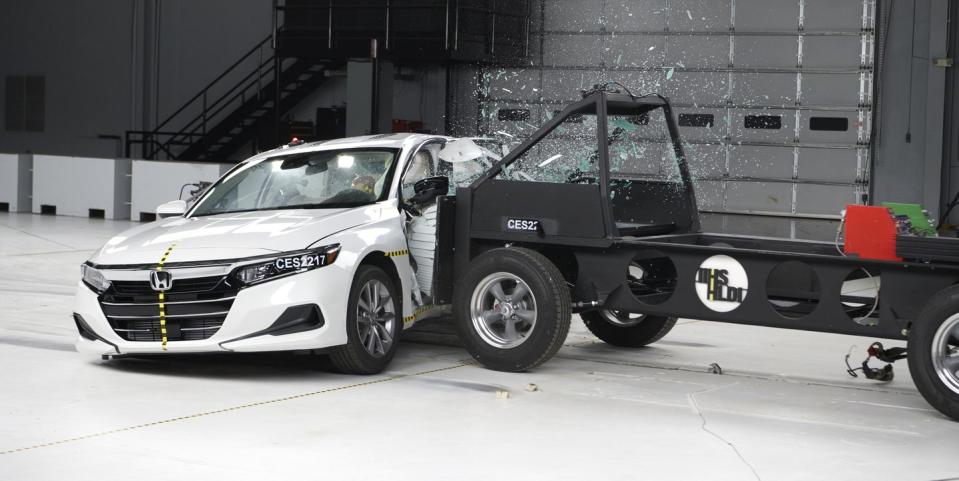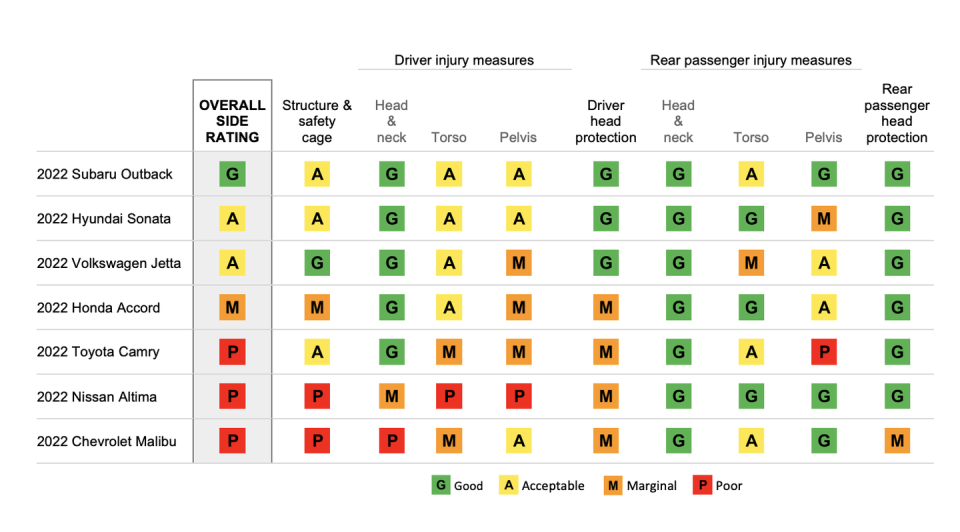Updated IIHS Crash Test Shows SUVs Are Making Roads More Dangerous For Everyone Else

One of the many reasons SUVs and trucks appeal to so many car buyers is a perception of safety. Conventional wisdom seems to suggest that you're safer in a car that's higher off the ground, even if in reality, you're in a vehicle that likely has a high center of gravity, and thus a greater rollover risk. However, as more consumers embrace high-riding vehicles, you might actually be less safe in your conventional car, in at least one regard.
The Insurance Institute for Highway Safety (IIHS) has developed a new side impact test that reflects the growing average size of vehicles on U.S. roads. Where previously the side impact test used a 3300-pound rig traveling at 31 mph, the test now uses a 4200-pound rig traveling at 37 mph, a better representation for the sorts of cars Americans drive. The Institute recently re-ran side-impact tests on a number of mid-size cars, and the results were not great.

Of the cars tested, only the Subaru Outback received a "Good" rating. Notably, the Outback has a higher ride height than any of the traditional sedans in this test. Generally speaking, these mid-size cars fared worse than the small and mid-size SUVs recently tested with this new procedure.
"With vehicles that sit lower to the ground, the striking barrier hits higher on the door panel," said IIHS President David Harkey in a statement. "That potentially puts sedans and wagons at a disadvantage in this evaluation but reflects what happens in a real-world crash when these vehicles are struck by a higher-riding pickup or SUV."
Given this, it's hard not to think that you're better off in an SUV or truck. That their increased presence has made it less safe to drive anything else. The perceived safety they offer has actually turned into a reality. If you can't beat the high-riding crowd, you ought to join them. For enthusiasts, or those who see the choice of an SUV or truck over a car as wasteful, it's easy to rue this situation. Car lovers prefer not to drive heavier, worse-handling, less-efficient vehicles, but when it's a question of safety, there's not much of a choice.
Joseph Young, a spokesperson for the IIHS, gave reason not to despair in an email to Road & Track. For example, the Toyota Camry was strong structurally but got a lower rating because of its marginal head protection, which can be addressed by improving airbags. Young also noted that the IIHS has observed that many cars have strong B-pillars, but relatively weak doors. Strengthening the doors can help achieve better ratings. Automakers will need to make changes soon as for the 2023 model year, a good or acceptable rating will be required for the IIHS to award a car a Top Safety Pick rating, while only a good rating will do for a Top Safety Pick+.
Of course, there's the matter of older cars. Surely the next-generation Toyota Camry will perform well in IIHS testing, but what about the many older Camrys still on the road? What about the older sports cars we here at Road & Track love?
Driving an older car has always meant an acceptance of greater risk, consciously or not, and that risk seems like it'll grow as the average car gets larger. Personally, I'm not giving up on my roadster, yet something like a Kia EV6 as a daily driver suddenly seems a lot more appealing.
You Might Also Like

 Yahoo Autos
Yahoo Autos 